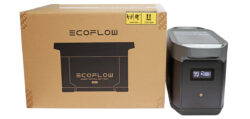
Layout, design and features …
Here you can see the EcoFlow Smart Extra Battery, which looks similar to the previously tested EcoFlow Delta 2 Max Powerstation and is also equipped with two handles. There is a large storage area on the top for placing the PowerStream or other extra batteries. The Delta 2 Max also has a gold/yellow multifunction power button and an operating LED on the front. A Bluetooth pairing LED is not required and is just as absent as USB ports or similar. Direct use or direct control via the EcoFlow app is not intended, but you always need an extra device such as a power station (Delta), a micro inverter (PowerStream) or air conditioning (Wave 2). On one side we only see the EcoFlow Smart Extra Battery Max lettering …
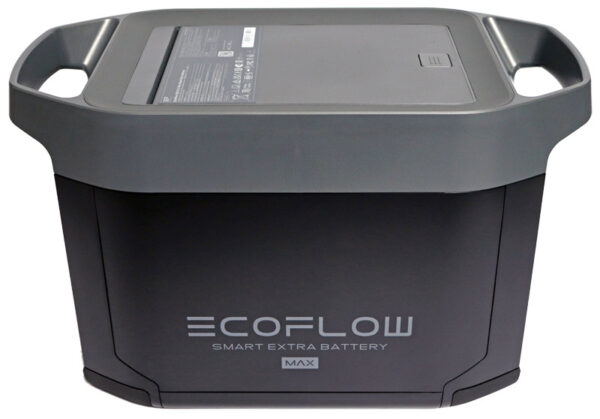
… on the other Smart Extra Battery side, the only connection can be seen under a small dust cap.
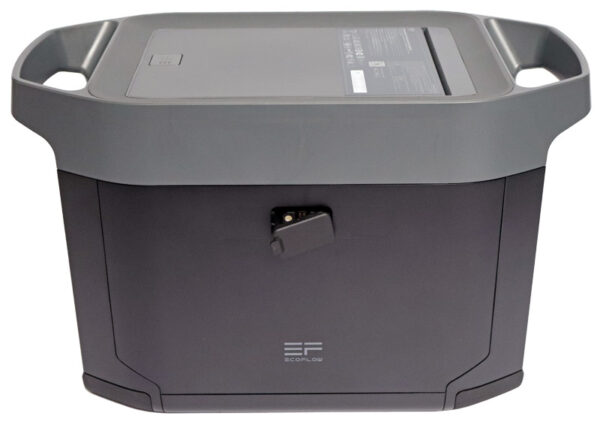
In the middle of the front of the device there is an easy-to-read display with the runtime in hours and percentages as well as the current input and output performance and further display options for overload, too high or too low a temperature and a battery failure warning. The latter should of course never be displayed. EcoFlow protects the display on delivery with a small film, which should be removed for operation.
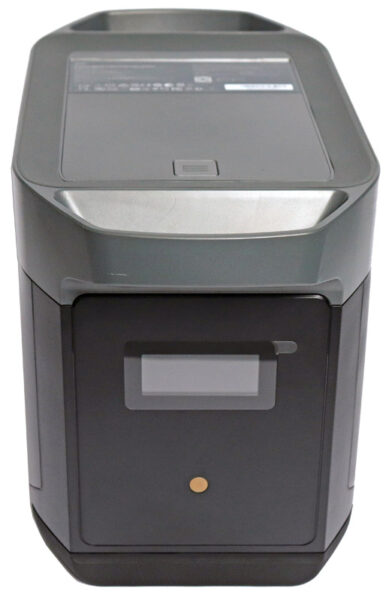
There is nothing to see on the back of the device … except for a large ventilation grille.
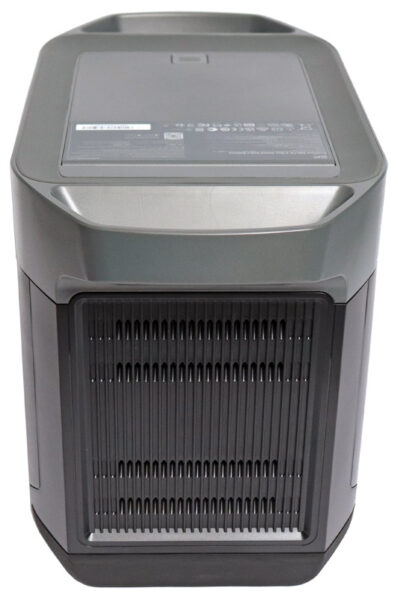
However, if you look at the back of the Powerstation, it looks completely different. But no need to panic, because the extra battery has other qualities!
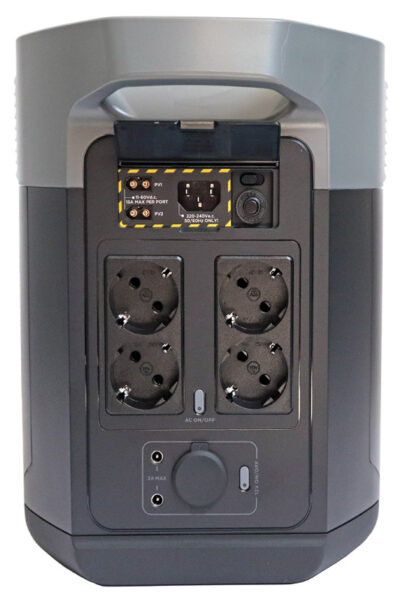
A small nameplate has been attached to the hinged lid on the top of the device with the rubberized edge. Speaking of the rubberized edge – here we did not work with a soft lacquer surface that dissolves after a few years (see Soft lacquer removal instructions), but with a cleanly edged rubber ring.
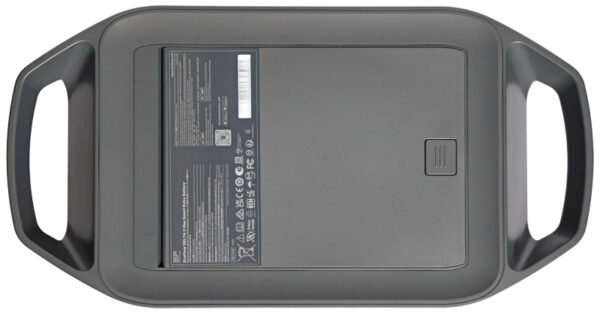
The underside of the Smart Extra Battery has been fitted with two very stable rubber elements to ensure a secure stand at all times. This is particularly useful when the devices are stacked on top of each other.
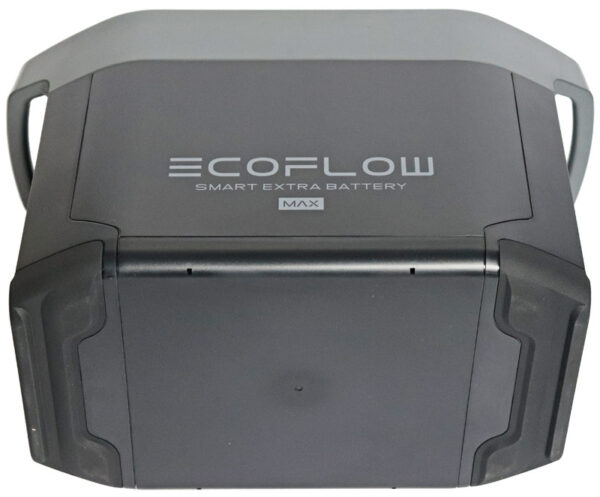
The secure stand is also necessary, as the lower section contains several LiFePO4 (LFP) battery cells with a capacity of 40Ah and 51.2V, which means that a total capacity of 2048Wh is achieved. LiFePO4 or LFP batteries are made of lithium iron phosphate and, in contrast to conventional lithium-ion batteries, are significantly safer and more durable, meaning they can withstand more charging cycles. According to the data sheet, they offer more than 80 percent at 3000 cycles, which is an understatement. With conventional lithium-ion batteries, such as those used in the first-generation EcoFlow Delta, the figure is just 800 charging cycles at over 80 percent.
Of course, we didn’t want to miss the opportunity to take the extension battery apart to see the quality for ourselves. The workmanship and construction of the EcoFlow Delta 2 Smart Extra Battery Max is truly exemplary and leaves little room for improvement.
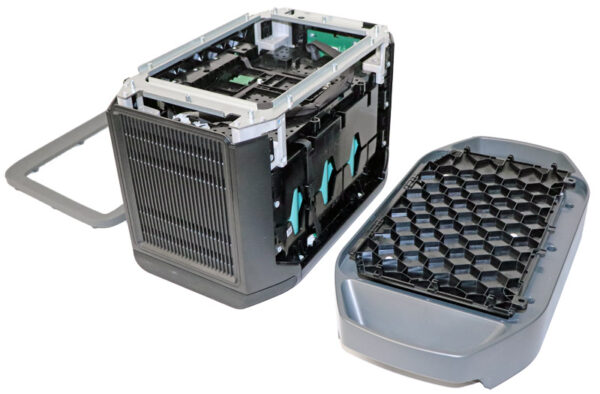
Let’s take a look at how everything is connected on the next page.
We continue with the EcoFlow Smart Extra Battery installation …
